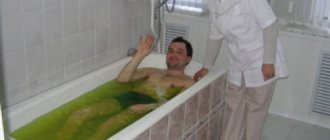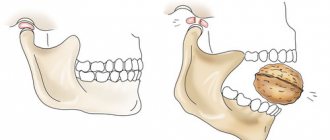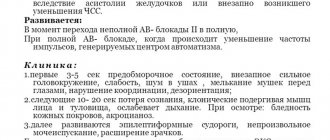What ointments for intercostal neuralgia will help relieve combat syndrome and discomfort? This question is often asked by patients who are faced with the problem of compression of the nerve roots in the area where they exit the spine. There is no clear answer. Pharmacy products for external use when diagnosing intercostal neuralgia are represented by a wide variety of types and are prescribed by the attending physician.
Independent selection of ointments, creams, gels to relieve unpleasant, painful sensations resulting from compression of nerve endings is strictly prohibited. If qualified assistance from a neurologist is ignored, the likelihood of a deterioration in the patient’s condition, a decrease in their quality of life, performance, and the development of complications increases.
Causes of development of intercostal neuralgia
Timely treatment of the disease allows you to avoid complications and shorten the period of disability.
Treatment of intercostal neuralgia, which is an unpleasant disease, is a rather complex process. A number of reasons determine the development of the pathological condition. These include:
- sudden, awkward movements;
- osteochondrosis of the thoracic axial skeleton, which leads to the destruction of the intervertebral discs or its injury;
- lack of organization of a balanced nutritional diet rich in vitamins, minerals, microelements that are necessary for the health of nerves, muscle fibers, cartilage and hard tissues of the spinal column;
- blows, bruises of the chest, back, rib fractures;
- congenital or acquired pathological deformities of the vertebrae;
- colds and viral infections;
- hypothermia and severe physical exertion;
- diagnosing radiculopathy, vertebral hernia;
- increased interest in drinking alcoholic beverages.
Such reasons can provoke the development of intercostal neuralgia and, as a result, pain syndromes of varying intensity and decreased ability to work. Timely treatment of the disease allows you to avoid complications and shorten the period of disability.
Medications with distracting effects
The following are considered good ointments for neuralgia - both the shoulder joint and other parts of the human body:
- Apizartron (with bee venom),
- Viprosal (with viper).
The first medicine effectively eliminates discomfort, stops the inflammatory process, and intensifies local metabolism by accelerating blood flow.
Viprosal generally has the same properties, but additionally contains fir oil and camphor. For this reason, the effect when using it appears much faster.
You should know that such drugs cannot be used at your own discretion. It is necessary to resort to them with special caution:
- pregnant women,
- nursing mothers,
- for allergy sufferers,
- persons suffering from pathologies of the heart and blood vessels.
For the treatment of the spine, back and lower back pain, the Golden Star balm is also suitable. It is completely safe and has no side effects. True, it will only help with minor symptoms.
The need to use ointments for intercostal neuralgia
Neurologists include the use of drugs for external use in the treatment regimen for a pathological condition that develops as a result of compression of the nerve roots in the area of the thoracic vertebrae. The use of ointments, gels, creams, presented in a wide range of types in pharmacy chains, is considered an excellent addition to ongoing drug therapy, massage procedures, physiotherapeutic measures, and physical therapy exercises. The list of main purposes of their purpose includes:
- reducing the intensity of pain and achieving an analgesic effect;
- relieving the inflammatory process in the thoracic axial skeleton;
- eliminating the risk of aggravation of the situation, deterioration of the patient’s general condition, and development of complications;
- minimizing discomfort, discomfort, irritability, nervousness caused by disability;
- relaxation of muscle fibers and relieving additional stress on the inflamed area of the chest and back;
- improvement and strengthening of blood circulation in the tissues of the axial skeleton;
- warming the affected area;
- reducing the severity of compression of nerve endings;
- increasing the level of elasticity of inflamed tissues.
Painkillers
The first thing required when treating neuralgia is to eliminate pain. The following tools help achieve this:
If we are talking about a very acute manifestation of neuralgia - both in the thoracic region and in other areas - in which the nerve roots are pinched, then it is more advisable to use stronger drugs:
For damage to the occipital, facial and other nerves, the following is prescribed:
All of the above drugs are produced in the form:
The course of treatment with the described anesthetics is always very short and does not exceed 5 days. The thing is that they quickly disrupt the functioning of the digestive system.
Features of the use of ointments for intercostal neuralgia
Treatment of intercostal neuralgia with ointments, gels, and creams has a number of positive aspects. These include simplicity and ease of use, economical consumption of the drug, achieving the expected result in the shortest possible time, accessibility to all segments of the population, elimination of disease symptoms and pain.
An important point in the treatment of neurological pathology is strict adherence to the instructions from the manufacturer attached to the drug, recommendations, prescriptions of the attending physician, bed rest during an exacerbation of the disease on a sufficiently elastic and hard mattress, and the mandatory exclusion of drafts. Also, after applying ointments, it is recommended to wrap the inflamed areas of the back and chest with warm items of clothing, accessories in the form of shawls, scarves. Proper treatment with external agents for intercostal neuralgia is the key to achieving a positive result, returning to a normal lifestyle as soon as possible, and also helps prevent the risk of relapses. The timing of use of ointments is determined by the attending physician.
Prevention
It is well known that any disease is easier to prevent than to treat. This is also true for neuralgia.
To avoid the occurrence of this disease, it is recommended to follow these simple rules:
- Monitor your diet and lifestyle
- Avoid hypothermia and drafts
- Avoid strenuous physical work
- Avoid injury to the ribs and spine
- Monitor correct posture and do strengthening exercises, especially if your job is sedentary
- Timely treatment of infectious diseases and diseases of the musculoskeletal system
ul
Properties and characteristics of ointments for pain relief
The pharmaceutical industry produces a wide variety of ointments, creams, and gels for the effective treatment of intercostal neuralgia. The most popular of them include:
- Voltaren and other analogues based on diclofenac are non-steroidal anti-inflammatory drugs. After regular application 3-4 times a day to the inflamed area of the back and chest, it is possible to quickly relieve pain and achieve an analgesic effect.
- Ketonal provides an opportunity to quickly reduce pain. The active ingredient in its composition, called ketoprofen, determines its analgesic, anti-inflammatory, and analgesic properties. The drug is available in the form of a gel and cream. Ketonal is recommended to be applied to problem areas of the back and chest 2 times a day. The maximum daily dose should not exceed more than 10 mg of the drug.
- Viprosal, which contains snake venom, turpentine and camphor, is prescribed to achieve a warming, analgesic effect. The use of ointment makes it possible to accelerate blood circulation in the affected area of the back and chest, restore damaged nerve endings, and eliminate painful sensations.
- Apisatron refers to a variety of bee venom ointments that have a combined effect. After applying the drug, patients will experience a burning sensation and notice redness of the skin. The use of Apisatron reduces the severity of pain, eliminates toxins, improves metabolic processes and blood flow in places where nerve roots are pinched.
- Finalgon has a warming, anti-inflammatory analgesic effect. The butoxyethyl alcohol and vanillylnonamide contained in its composition, which allows for high-quality treatment, causes redness and warming of the skin after applying the drug to the sore spot.
- Menovazin is distinguished by its ability to achieve a cooling, analgesic effect, and vasodilation. The ointment contains procaine, benzocaine, and menthol.
- Turpentine ointment has antiseptic properties. After applying the drug, which has a specific odor, it is possible to relieve intense pain in the back and chest after the development of intercostal neuralgia.
If you are treated promptly after the first symptoms of the disease appear, you can always shorten the recovery period, avoid relapses, and return to work and household chores in the near future!
"Voltaren"
Currently, every pharmacy will offer a huge assortment of ointments that will give excellent results in the treatment of neuralgia, but I would like to pay special attention to Voltaren. This product is recommended to be applied to the body up to 4 times a day; it has an analgesic and anti-inflammatory effect. This type of ointment contains an active ingredient such as diclofenac, which is why it has an analgesic effect on the body and also relieves inflammation.
If you combine the ointment with tablets that are part of the group of non-steroidal anti-inflammatory drugs, then together they help to quickly get rid of pain, which most often causes the greatest inconvenience to a patient with neuralgia.
"Viprosal"
This drug, presented in the form of an ointment, according to patients, very quickly copes with pain, and it is this that causes the greatest inconvenience to the patient in neuralgia. Thanks to the unique composition of the ointment, it has several effects on the body at once and easily copes with attacks of neuralgia. It contains viper venom, camphor oil, turpentine and salicylic acid. Each of these substances has its own effect, but together they are aimed at eliminating pain, activating the body’s protective functions and removing the causes that caused the malaise. But it is worth remembering that only complex therapy will help cope with such a diagnosis as “intercostal neuralgia.” Treatment at home with ointments is allowed only after consultation with a doctor, because Viprosal has a number of serious contraindications for use: pathologies of the kidneys and liver, exhaustion of the body, brain and coronary insufficiency, and others.
This is only a small fraction of those ointments that will help get rid of the pain and inflammation that accompany neuralgia. But it is better if the doctor selects the ointment, focusing on the causes of the pathology.
Ketonal
And this remedy belongs to the group of non-hormonal drugs. It is based on ketoprofen, which is similar in properties to ibuprofen, an analgesic and antipyretic drug included in the WHO list of essential medicines.
"Ketonal" is produced in the form of suppositories, tablets, injection solutions and ointments.
Features of the drug for external use:
- Prescribed for intercostal neuralgia caused by osteochondrosis due to surgical interventions. It also helps with arthrosis, ankylosing spondylitis, and after injuries.
- Use for 7-15 days; longer is not recommended due to the high likelihood of side effects.
- This white, opaque ointment is applied to the area with severe pain, rubbed in, and sometimes it is recommended to use a gauze bandage (to achieve greater effect).
Possible contraindications to the use of Ketonal ointment: peptic ulcer disease, non-ulcer dyspepsia, renal and liver failure, asthma. Take with caution for swelling and heart disease. The drug is not prescribed to children under 14-15 years of age.
Note! "Ketonal" is not allowed in the third trimester due to the possibility of post-term pregnancy. In the first two trimesters it is prescribed if the benefit to the woman outweighs the possible harm to the fetus.
With manifestations of intercostal neuralgia, as well as in therapy against pain in the chest area of a rheumatoid and non-rheumatoid nature, Indomethacin ointment is used. It penetrates deep inside, relieving swelling, inflammation, and pain.
- Does not penetrate into the bloodstream and is quickly absorbed. It is based on indolylacetic acid, a phytohormone. It is biosynthesized in the liver and excreted by the kidneys, therefore, for pathologies of these organs, the ointment is not prescribed.
- When applied 2-3 times a day to a damaged area with severe pain, the substance accumulates more in the body (the concentration increases by 1.4 times) when compared with a single application.
- As patient reviews show, the ointment is effective. The effect remains after cancellation.
Important! This non-steroidal anti-inflammatory drug with analgesic properties is not prescribed for pregnant and lactating women and children under 6 years of age.
Contraindications include diseases of the liver, kidneys, and stomach. People who have been diagnosed with problems with blood clotting and allergies to acetylsalicylic acid are also not prescribed the drug.
Possible contraindications to the use of Ketonal ointment: peptic ulcer disease, non-ulcer dyspepsia, renal and liver failure, asthma. Take with caution for swelling and heart disease. The drug is not prescribed to children under age.
Treatment
If the patient is diagnosed with “intercostal neuralgia” and has already received all the necessary assistance in the hospital, then he is sent for home treatment. Neuralgia takes a long time and is difficult to treat, therefore, while following all the doctor’s recommendations, it is also necessary to visit him regularly in order to make adjustments to the therapy. At home, having previously agreed on all procedures with the doctor, you can carry out therapy using the following methods:
- use warming and pain-relieving ointments;
- traditional medicine;
- use home devices for physiotherapeutic procedures, for example, Darsonval or magnetic therapy devices;
- massage.
In combination, such treatment will give good results, and pain will not bother you.
How to treat neuralgia of the back is of interest to many patients suffering from pain and other symptoms characteristic of this disease. Often, if you consult a doctor in a timely manner, neuralgia goes away very quickly and responds well to treatment. The main goal of therapy is to eliminate acute attacks and pain. In addition, it is necessary to eliminate the cause that provoked the occurrence of neuralgia.
Therapy involves the use of certain means and techniques, in particular such as:
- manual therapy;
- massage;
- acupuncture;
- physiotherapy;
- medications;
- traditional medicine.
Depending on the symptoms of neuralgia of the back, treatment is selected depending on these manifestations. Elimination of acute attacks of pain is possible through the use of novocaine blockade or non-steroidal anti-inflammatory drugs. After eliminating the first signs of pathology, a massage is indicated, which helps to relax the muscles, increase immunity, and also restore the basic functions of the body.
After the basic treatment procedures, special exercises are shown, which should be selected by a specialist. Therapy should also be carried out using physiotherapy, rubbing, compresses and ointments.
It is very important to know how to treat back neuralgia, as this will allow you to choose the best method for therapy and significantly improve your well-being.
Did you know that...Next fact
Typically, neuralgia of any type responds well to treatment in the early stages. A timely visit to a specialist will help to avoid complications, so do not put off talking with a doctor for too long. There are a huge number of methods to combat this disease, so the doctor will be able to choose exactly the course that is suitable in your case.
Treatment of any disease, including neuralgia, is largely determined by the individual situation of the patient, so there is no universal set of drugs. For each stage and degree of neglect of neuralgia, special therapy is selected.
| Anti-inflammatory drugs |
|
| Antiepileptic drugs | |
| Vitamins B |
|
| Antihistamines | |
| Muscle relaxants | — |
| Anti-inflammatory ointments |
|
| Anticonvulsants |
|
| Novocaine blockades of various kinds | — |
Important! Each of the drugs listed here has an extensive list of side effects and contraindications; using them without medical supervision is strictly prohibited.
For neuralgia of the back, various types of therapeutic physical exercises, massage, manual therapy and even acupuncture are used with great success.
All of these treatments must be prescribed by your doctor. Only a specialist will be able to prescribe you the correct therapeutic course, which includes sessions of physical education, therapeutic massage and manual treatment. It is prohibited to exercise or massage on your own, as you can aggravate your condition, which will lead to irreversible consequences.
In addition to traditional therapeutic methods, there are a number of folk recipes that can help you relieve acute pain and cope with attacks of neuralgia.
Important! Alternative treatment should in no case be taken as a basis in this case, since, despite all its harmlessness, neuralgia can be very dangerous in advanced cases. Recipes can only be used as a supplement or first aid.
Here are a few alternative medicine recipes that can help cope with a painful attack:
- Prepare a healing ointment from Vaseline and lilac buds. Make a thick decoction of lilac buds and mix it with Vaseline in a ratio of 1 to 3. This ointment relieves pain and fever;
- Apply a compress of potatoes, honey and horseradish to the sore nerve. This lotion will warm up the muscle well and reduce pain;
- Drink lemon balm and mint tea. This tea will help you relax and relieve muscle tension, and therefore inflammation;
- You can also try taking a bath with pine cone extract to relax;
- If you notice severe swelling, we advise you to apply a salt compress to it;
- In order to improve blood circulation in the inflamed area, apply a compress of beetroot or horseradish juice;
- A compress made from ordinary burdock turns out to be quite effective. Simply tie a fresh, clean burdock leaf to the sore area;
- Ointments using beeswax and propolis are also effective. But here you need to be careful. An allergic reaction is possible.
Once you have used one or more of the recipes, wrap the affected area as warmly as possible. At the same time, you should not allow strong drafts in the apartment or strain the inflamed muscle.
As with any other disease associated with pain in the joints and muscles, there are a number of preventive measures that can help avoid the appearance of neuralgia:
Pay attention to the rules for preventing back neuralgia. Try to avoid severe stress, as well as drafts and severe hypothermia;- Watch your diet, enrich it with vitamins, minerals, refrain from too spicy, salty and fatty foods, as well as alcohol;
- Strengthen your immune system. Walk in the fresh air as often as possible, move, watch your posture;
- Don't start spinal diseases. If you notice any symptoms that may indicate impending problems, it is better to immediately contact a specialist and not create additional problems for yourself.
Compression of the nerve endings in the area where they exit the spine results in acute or dull attacks of pain in the chest or back. The use of ointments for intercostal neuralgia is aimed at eliminating the main symptom – pain.
These remedies eliminate pain, relax muscles, relieve inflammation, and some have a warming effect.
Before treatment, be sure to visit a doctor so as not to confuse intercostal neuralgia with more serious pathologies.
What ointments for intercostal neuralgia will help relieve combat syndrome and discomfort? This question is often asked by patients who are faced with the problem of compression of the nerve roots in the area where they exit the spine. There is no clear answer. Pharmacy products for external use when diagnosing intercostal neuralgia are represented by a wide variety of types and are prescribed by the attending physician.
Independent selection of ointments, creams, gels to relieve unpleasant, painful sensations resulting from compression of nerve endings is strictly prohibited. If qualified assistance from a neurologist is ignored, the likelihood of a deterioration in the patient’s condition, a decrease in their quality of life, performance, and the development of complications increases.
The main method of treating the disease in question is the use of ointments and gels. They can have a warming or cooling character.
It is important to remember that under no circumstances should you self-prescribe any ointment for intercostal neuralgia. First of all, you need to see a doctor. This disease can have various causes. Thus, it manifests itself due to injuries, sudden movements, infectious diseases, hypothermia, severe physical exertion, spinal hernia and other diseases.
Ask your question to a neurologist for free Irina Martynova. Graduated from Voronezh State Medical University named after. N.N. Burdenko. Clinical resident and neurologist of the Moscow Polyclinic. Ask a question{amp}gt;{amp}gt;
Not only ointments, but also tablets, which should be taken after meals, will help eliminate the symptoms of this disease. We should not forget about the various physiotherapeutic methods. These include, for example, acupuncture, electrophoresis, ultra-high frequency therapy (UHF therapy). To improve blood circulation, in some cases a pepper patch is also prescribed, which helps relieve discomfort even faster.
We should also not forget that the patient needs to create favorable conditions for a speedy recovery. We are talking about a flat mattress that should not be too hard. It will help relieve stress from the spine and muscles.
This is why it is not recommended to sleep on the floor.
Thus, when treating intercostal neuralgia with ointment or other drugs, it is important to remember that this process takes a long time. Only a doctor can determine the duration of treatment. When a specialist prescribes a course of treatment for a patient, he strives not only to remove the symptoms of the disease being analyzed, but also to eliminate the cause of their occurrence - in most cases, the cause is problems with the spine.











